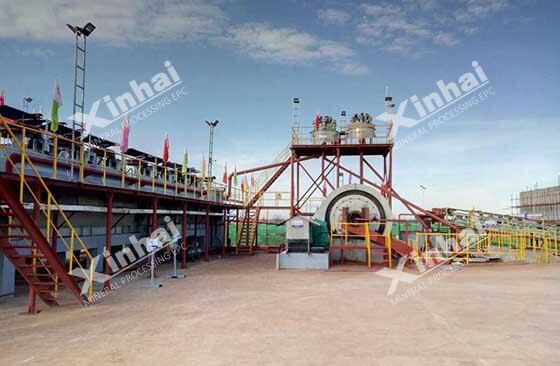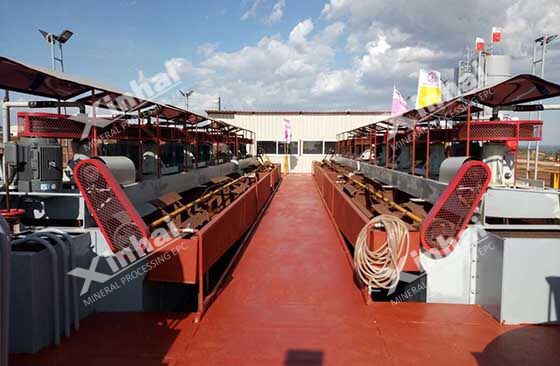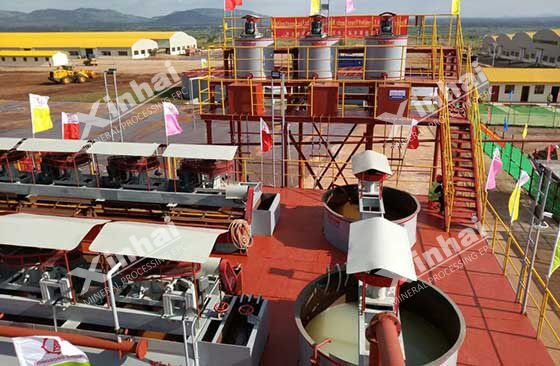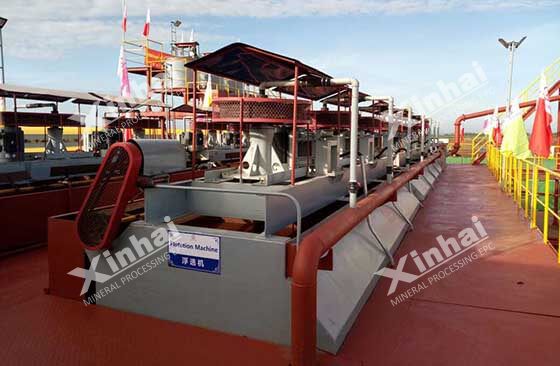
Phosphate ore has a complex structure and diverse properties, so the flotation process is widely used in phosphate ore beneficiation. Different types of phosphate ore should use different and suitable flotation processes to effectively remove gangue minerals and achieve the purpose of enriching phosphate concentrates.
In this article, we will take you to know more about the three types of phosphate flotation processes.

Carbonate-type phosphate ore can obtain qualified phosphate concentrate through a single reverse flotation process. The main structure of carbonate-type phosphate rock is sphaerolitic (including oolitic and pseudo-oolitic), sand, gravel, gel, and biological debris. Dolomite and quartz are tightly combined with the phosphate rock and wrap each other, and the phosphate rock aggregates are also mixed with small gangues, which makes it difficult to mechanically break and dissociate the phosphate minerals and gangues.
The single reverse flotation process is mainly used for the separation of phosphate rock and dolomite. Phosphoric acid and sulfuric acid are used as media regulators and inhibitors respectively. We use the fatty acid collectors to float dolomite in weak acid media, and the product in the tank is phosphate concentrate.
The single reverse flotation process has the advantages of a simple process, low chemical consumption, and low-temperature influence, as well as relatively low beneficiation cost. However, this process can only remove phosphate gangue minerals, so it is difficult to obtain high-quality phosphate concentrates.

The siliceous phosphate ore can be processed by a single positive flotation process to obtain a qualified phosphate concentrate. The main gangue minerals of siliceous phosphate ore are dolomite, quartz, and chalcedony. To obtain high-grade phosphate concentrate, we need to exclude siliceous minerals.
The positive flotation process is generally used to float low-grade phosphate rock, such as silicate and calc-silicate phosphate rock. This process must use inhibitors with strong inhibitory properties, and we often use sodium carbonate and water glass as media regulators and silicate inhibitors respectively. Besides, using fatty acid collectors to float phosphate minerals can achieve better results.

Mixed phosphate ore often adopts positive-reverse, reverse-positive, and double-reverse flotation processes to obtain qualified phosphate concentrates.
The main industrial minerals of mixed phosphate rock are phosphate minerals (fluorapatite), and the main gangue minerals are carbonate minerals (dolomite, calcite), clay minerals (white mica, sericite, kaolinite, potash feldspar, albite, quartz, chalcedony), iron-carbon minerals (pyrite, limonite, carbonaceous), etc.
The positive-reverse flotation process is an effective method for enriching low-grade phosphate ores. Generally, the process first uses sodium carbonate as a pH adjuster and water glass as a silicate mineral inhibitor to float phosphate minerals in an alkaline medium. Then we use phosphoric acid and sulfuric acid as pH adjusters and phosphate mineral inhibitors to float carbonate in the weakly acidic medium.
The purpose of the second stage of reverse flotation is not only to improve the grade of the concentrate but also to help improve the subsequent processing performance of the phosphate concentrate.

The reverse-positive flotation process first floats carbonate minerals in acidic media and then floats phosphate minerals in alkaline media. The process medium environment is acidic first and then alkaline. Sodium carbonate is generally used to neutralize the acid to adjust the pH of the medium.
In the double reverse flotation process, we use phosphoric acid and sulfuric acid as pH adjusters and phosphate mineral inhibitors respectively, and float dolomite with fatty acid collectors in an acidic medium. Then we use sodium carbonate as an adjuster and use cationic collectors (namely amine collectors) for flotation of silicate minerals in a weakly alkaline medium, and the final product in the tank is phosphate concentrate.
The double reverse flotation process can be carried out under the conditions of normal temperature and large particle size.

We have introduced the flotation process used for the three types of phosphate rock above. In actual production, we suggest that mine owners conduct beneficiation tests before establishing a beneficiation plant, and select the appropriate flotation process according to the nature and type of phosphate ore to achieve ideal economic indicators.
To find out more about our products and solutions, please fill out the form below and one of our experts will get back to you shortly.